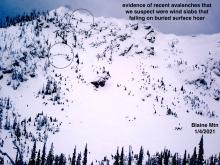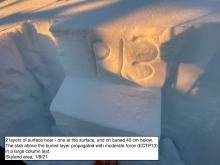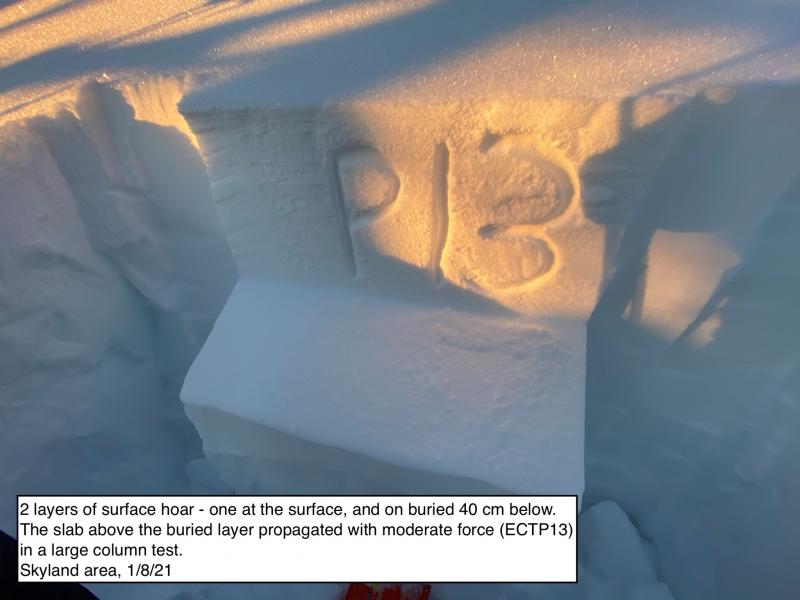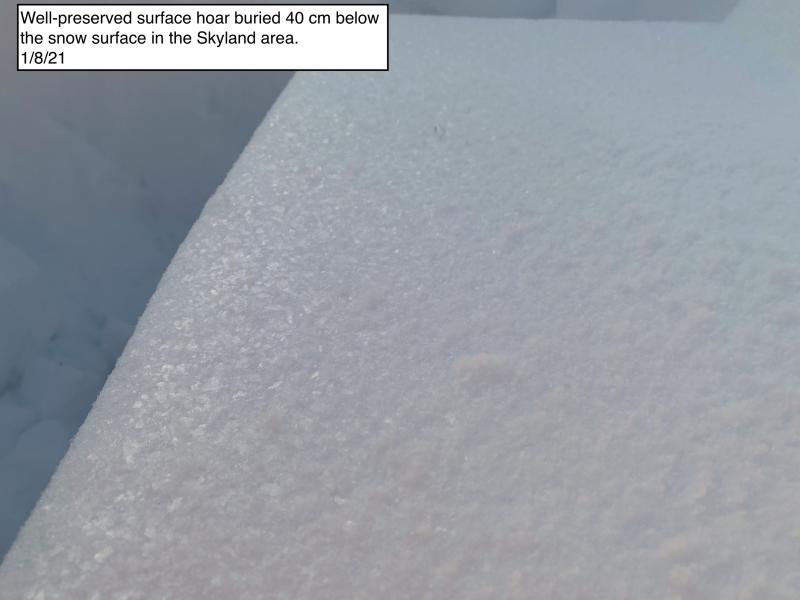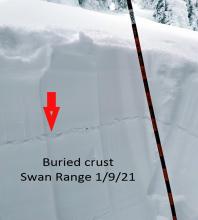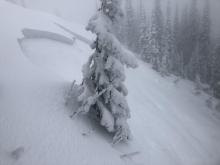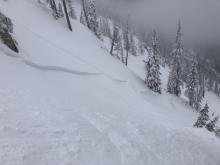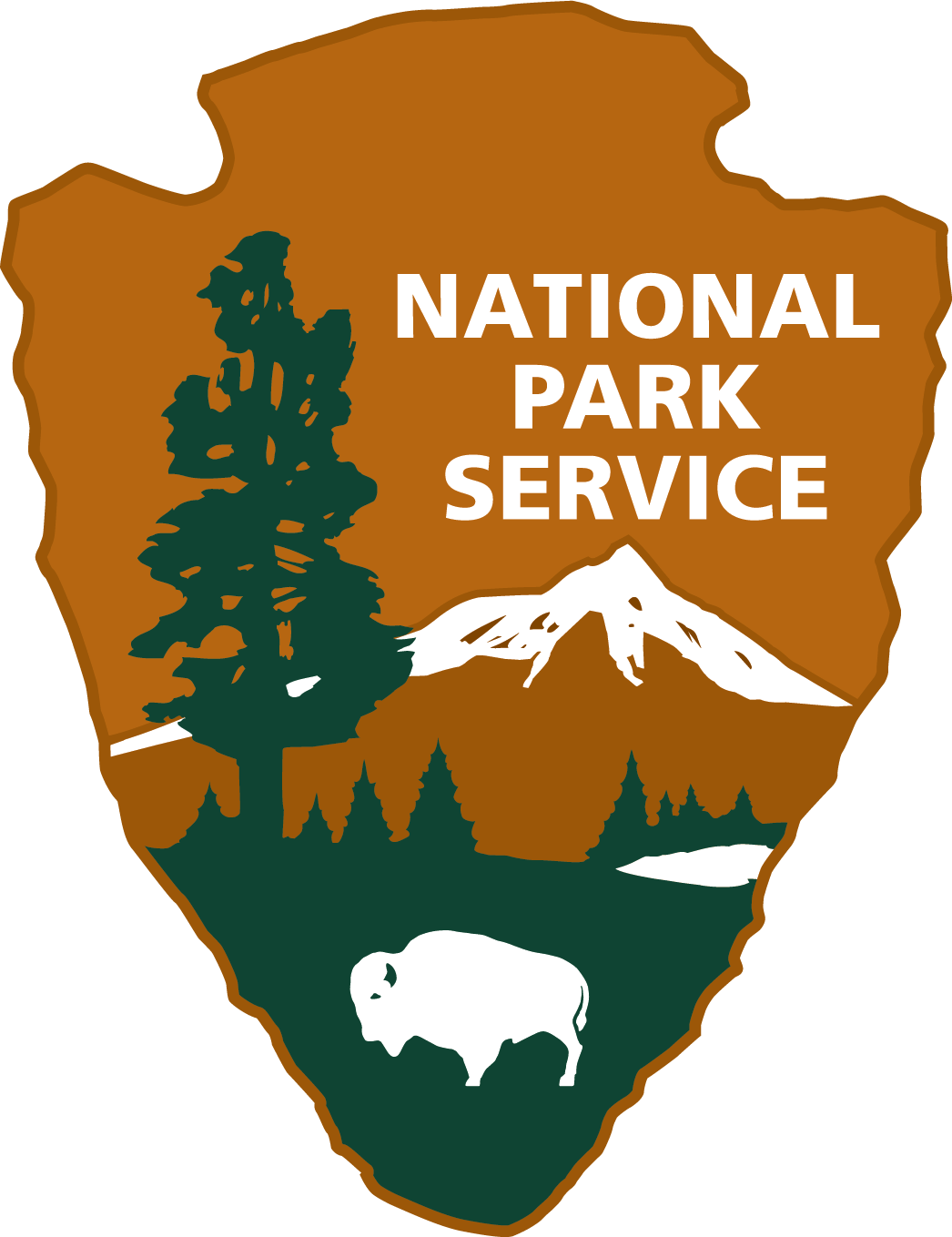| Wednesday | Wednesday Night | Thursday | |
|---|---|---|---|
| Cloud Cover: | Mostly Cloudy | Mostly Cloudy | Mostly Cloudy |
| Temperatures: | 13 to 22 deg. F. | -2 to 3 deg. F. | 18 to 25 deg. F. |
| Wind Direction: | Northeast | Northeast | East |
| Wind Speed: | 16G29 | 14G28 | 9 |
| Snowfall: | 0" in. | 0" in. | 0 to 1" in. |
| Snow Line: | 0' | 0' | 0' |
Whitefish Range
Swan Range
Flathead Range and Glacier National Park
How to read the forecast
Sheltered, mid elevation slopes less than about 35 degrees are the least risky choices for enjoying today's fresh powder. As you climb into upper elevations or onto steeper slopes, conditions become more complex and more dangerous. Winds from multiple directions have thickened and stiffened slabs, and old, weak snow buried a week ago makes triggering large slides likely on steep slopes. Choose conservative objectives and find other terrain if you feel collapses or see recent avalanches.
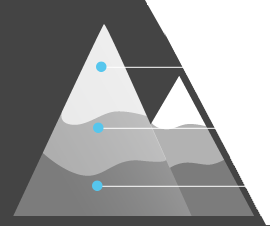
3. Considerable
?
Above 6500 ft.
2. Moderate
?
5000-6500 ft.
1. Low
?
3500-5000 ft.
- 1. Low
- 2. Moderate
- 3. Considerable
- 4. High
- 5. Extreme
-
Type ?
-
Aspect/Elevation ?

-
Likelihood ?CertainVery LikelyLikelyPossible
 Unlikely
Unlikely -
Size ?HistoricVery LargeLargeSmall

On steep, upper-elevation slopes, you're likely to trigger slabs 10 to 30 inches thick that break on a layer of facets buried about a week ago. The distribution of this layer isn't clear yet, and you may not see many signs of instability before a slope fails. It's possible to trigger these slabs from below or from adjacent slopes. The potential size of triggered slides, the uncertainty, and the unpredictability all demand a conservative approach today. Reduce your risk by staying off or out from under slopes likely to harbor the problem. That's shaded slopes steeper than about 30 degrees, or 35 degrees if you're willing to accept more risk (which has consequences for the whole community right now). Heed any warning signs - shooting cracks, whumpfing collapses, and recent avalanches.
-
Type ?
-
Aspect/Elevation ?

-
Likelihood ?CertainVery LikelyLikelyPossible
 Unlikely
Unlikely -
Size ?HistoricVery LargeLargeSmall

On steep slopes, you can trigger avalanches that break in the new snow or at the interface with older snow surfaces. The potential size of triggered slides increases with elevation and/or exposure to wind. Sun-exposed slopes have thinner slabs, and with arctic air in place, are unlikely to get crusty today, making them a good choice if you're looking to enjoy the new powder with less risk. Actively look for and avoid snow that feels dense or hard, and that cracks away from your snowmachine or boards. Recent avalanches, even small ones, are clear signs of danger.
"Houston, we have a problem."* It's a developing Persistent Slab problem, not an onboard explosion. While the extent of the problem is not yet clear, the warning lights are flashing. Two forecaster teams in the Flathead Range yesterday reported propagating results in large column tests and avoided steep, northerly slopes. The tests failed on a layer of faceted crystals buried by 18 to 30 inches of recent and drifted snow, in both wind-exposed and wind-sheltered terrain above about 6000 feet. Zach's video, below, shows this structure well.
Right now, we don't have a clear picture of where this layer exists. Prior to burial on 3/24, Zach found it on northerly aspects in the northern Whitefish Range and in the Flathead Range, while I found faceted snow on northerly aspects in John F. Stevens Canyon. Clancy found indirect evidence it exists in the Swan Range. The warm temperatures since it formed mean it's unlikely to have been preserved intact except at upper elevations. Indeed, both forecaster parties yesterday reported distinct differences between mid and upper elevation conditions.
The upshot is returning to earth - not getting caught in an avalanche - will require distinct changes in how we approach steep slopes. Avalanche problems the past few weeks have almost exclusively involved surface layers of the snowpack that provided clear feedback about the danger. That's no longer the case, so approach steep northerly and easterly slopes above 6000 feet with real caution. In our current temperatures, the powder will last until we get a better sense of whether this problem is widespread and/or long-lived.
In other news...snowfall from the past three days is adding up. Weather stations are reporting 1 to 2+ inches of SWE over the period (10-20 inches of snow), with the northern parts of the forecast region favored. With warm temperatures, most of the snow has accumulated above about 5500 feet and on shaded slopes. Winds have been moderate to strong from the southwest, and have mostly affected upper elevation terrain, as evidenced by several small wind slabs reported yesterday (here and here) They've shifted to northerly and easterly with the arctic air spilling over the divide, and have mixed down to valley floors. Expect increasingly thicker and larger slabs as you climb higher. Slabs that have been thickend and stiffened by the wind will be the most sensitive to the weight of a snowmachine or person. It will be hard to distinguish Storm Slabs from Persistent Slabs today, so terrain choices will be critical.
*That's the movie dialogue. The actual transmission was "Houston, we've had a problem. We've had a main B bus undervolt....we had a pretty large bang."
Winter! Arctic air spilling over the divide will keep things cold today, with light winds. There's enough moisture in the atmosphere for snow showers, though accumulations will be minimal. Certainly nothing like yesterday's "showers." The cold weather continues Thursday.
This forecast applies only to backcountry areas outside established ski area boundaries. The forecast describes general avalanche conditions and local variations always occur. This forecast expires at midnight on the posted day unless otherwise noted. The information in this forecast is provided by the USDA Forest Service who is solely responsible for its content.



